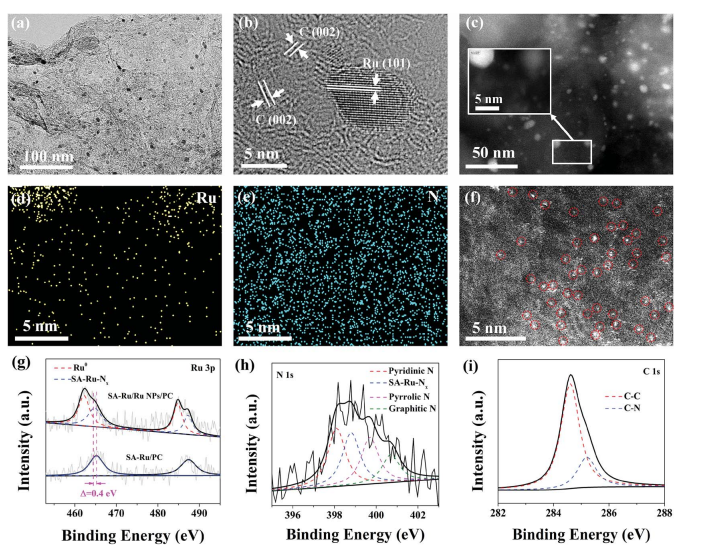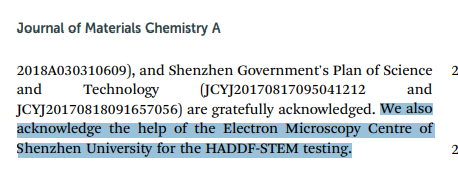基于电镜中心(EMC)FEI电镜数据,深圳大学化学与环境工程学院用户在JCR1区期刊Journal of Materials Chemistry A上发表论文,摘要如下:
Electronic structure engineering of single atomic
Ru by Ru nanoparticles to enable enhanced activity
for alkaline water reduction†
Qi Hu,‡ Guomin Li,‡ Xiaowan Huang, Ziyu Wang, Hengpan Yang, Qianling Zhang,
Jianhong Liu and Chuanxin He *
College of Chemistry Environmental Engineering, Shenzhen University, Shenzhen,
Guangdong, 518060, People's Republic of China. E-mail: Hecx@szu.edu.cn
† Electronic supplementary information (ESI) available. See DOI:
10.1039/c9ta06244k
‡ These authors contributed equally to this work.
Regulation of the electronic structures of metal centers represents a robust strategy for enhancing the
activity of electrocatalysts. Herein, we report the crafting of hybrid electrocatalysts comprising both
single atomic Ru (SA-Ru) and Ru nanoparticles (NPs) supported on porous N-doped carbon (PC), in
which the electronic structures of SA-Ru were effectively optimized by nearby Ru NPs to achieve great
enhancement of the hydrogen evolution reaction (HER). The resulting SA-Ru/Ru NPs/PC displayed
ultrahigh activity for HER in 1 M KOH with a mass activity of 4.2 mA mgRu 1 at 0.07 V vs. RHE; this
activity was 14 times that of commercial Pt/C, representing the largest reported value among the Pt-free
electrocatalysts. In addition to the ultrahigh activity, the composite possessed the outstanding stability of
24 h and rapid HER kinetics (i.e. Tafel slope: 31.8 mV dec 1
). The experimental and theoretical results
matched well with each other and unambiguously indicated that the control over the electronic
structures of SA-Ru and the advantageous PC support (i.e. its hierarchical porous nanostructures and
superhydrophilic surface) jointly contributed to the exceptional performance.

